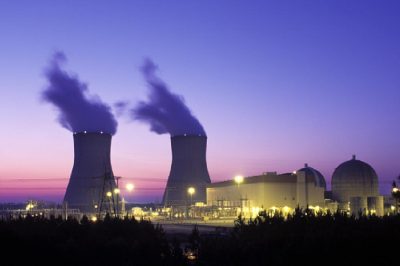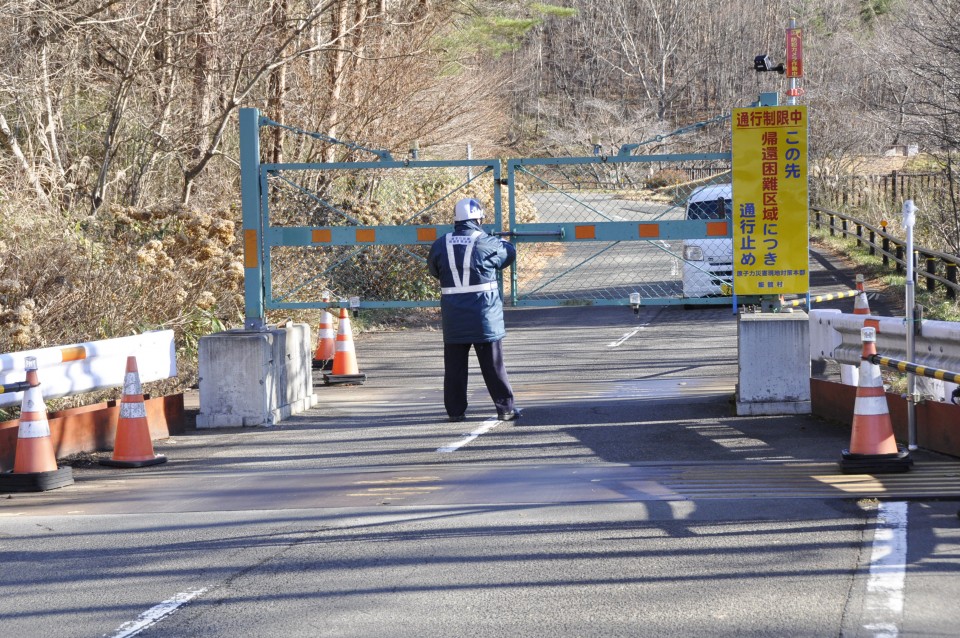The West Is a Loser in Nuclear Energy. Russia and China Take the Lead
Russia Winning Future Nuclear Arms Race

All Global Research articles can be read in 51 languages by activating the Translate Website button below the author’s name (only available in desktop version).
To receive Global Research’s Daily Newsletter (selected articles), click here.
Click the share button above to email/forward this article to your friends and colleagues. Follow us on Instagram and Twitter and subscribe to our Telegram Channel. Feel free to repost and share widely Global Research articles.
Global Research Referral Drive: Our Readers Are Our Lifeline
***
The US-EU-UK are completely backward in nuclear technology.
France exemplifies it: Flamanville 3 Nuclear power plant (NPP) goes online here in 2024. Construction was started in 2007 and planned to be finished only 5 years of later by 2012 – it is now 12 years late. Total construction time 17 years. That’s a delay of 240%. The cost have run up to € 12 billion. It was planned to cost only € 3.3 billion. That is a cost overrun of around 250%. And Flamanville 3 is planned to deliver an underwhelming output of only 1.65 GW. Finland gets nuclear power plants built by the French, and Finland experiences similar delays and cost overruns. Germany is dropping out of nuclear technology altogether and Sweden is just lying low with what they have.
UK is not better than France. Hinkley Point C with 3.2 GW was started construction in 2017 and was planned to go online 10 years later in 2027. Instead, construction is still not expected to be completed before 2030 – 13 years later. The construction cost are running up to £ 34 billion, and still counting.
The US has the world’s biggest nuclear power production, but the US has been extremely low on nuclear construction for decades.
After 30 years with no new nuclear power plants coming online, the US has just put two new reactors online, Vogtle 3 in 2023, and Vogtle 4 here in March 2024. Vogtle 3 and 4 are both 7 years late, and their construction costs doubled from $ 14 billion to $ 30 billion.
Grand US (and UK) ambitions to become leader in small Modular Reactors has so far shown no progress on the ground.
Japan is still in “nuclear” shock after the horrendous Fukushima disaster.
Photo taken on Dec. 6, 2020, in Iitate, a northeastern Japan village near the crippled Fukushima Daiichi nuclear power plant, shows a fence set up on a road to bar entry to an off-limit area ahead of the 10th anniversary of the earthquake-tsunami disaster and the subsequent nuclear crisis. (Kyodo)
The US-West is even completely absent in the latest nuclear technologies like molten salt, 4th generation, Thorium etc. which China is implementing on the practical scale these years. It is evident, that nuclear power is in deep crisis in Western countries (except for S.Korea). And with times for approval of 5 years or more, and times of construction of 15-20 years (!) there is no chance of the West catching up with Russia or China in the big nuclear technology race anytime soon.
Russia Taking Lead
Russia and China are the undisputed leaders in global nuclear technology. China has taken a lead in the construction of Thorium and molten salt reactors, which have unlimited amounts of fuel (Thorium much more abundant than Uranium) and can work anywhere without water for cooling – these are nuclear technologies the West doesn’t have any practical experience with whatsoever. But let’s focus on Russia for now.
Russia by building several nuclear reactors in Türkiye, Egypt, and elsewhere is a global leader in nuclear technology. Russia is also in the lead in Small Nuclear Reactors (SMR). SMR is a very important technology for Africa. Already here, nuclear technologies from the smallest to the biggest give Russia a big edge against the West in supplying energy for Africa. The US and UK have been talking about SMR for years, but they have gotten nowhere.
While US and UK talk, Russia is working it practically. SMR technology is green – no emissions. It can be located in remote areas. It can serve small communities but can also be scaled up big (build more). Construction is fast – 4 years. It mostly operates by itself – few experts needed to run it. It is very safe – everything is self-contained and designed to withstand any event. No waste in the area. Recycling is prepared – at the end of its life-cycle the SMR will be dismounted and trucked away as a unit. It will not be opened on location.
Breeding Nuclear Weapons Material
Going to the opposite end of the power-plant scale, from the small simple-constructed (but modern design) SMR to the big, fast Breeder reactors are probably the most advanced field in nuclear technology of strategic military and civilian importance.
Constructing an unprecedented 1.200 GW breeder reactor 42 km from Yekaterinburg in the Ural Mountains, Russia is now building a new generation of bigger and more advanced fast Breeder reactors. The West has no fast Breeder reactors in the pipeline.
With current time in Western countries for approval and construction, the West is thus already 10-25 years behind in this field. Fast Breeder reactors burn nuclear waste from other reactors and convert it into new nuclear “fuel”. That’s in the name “breeder”; Breeder Reactors “breed”, they produce more nuclear “fuel” than they consume. Put the word nuclear “fuel” in quotation marks, because what comes out of Breeder reactors is usable as more than fuel for peaceful nuclear power production. Because the kind of nuclear “fuel” coming out of fast breeder reactors is Plutonium which is also used for nuclear weapons. In fact, fast Breeder reactors are the only ones capable of producing significant amounts of weapons grade Plutonium. Fast Breeder reactors are indispensable for making more advanced nuclear weapons.
Nuclear weapons based only on Uranium have a lot of problems material production which is cumbersome and slow, in handling of the bombs, in delivery of the bombs, in how powerful they can be, how much nuclear material you need for each bomb, and how many bombs you can build. Therefore, nearly all modern nuclear military powers base their arsenal on Plutonium, not Uranium. To illustrate this, remember that the JCPOA required Iran to pour concrete into their only fast breeder reactor to prevent Iran from building a larger strike force of Plutonium nuclear weapons. Iran did so, destroyed their only fast breeder reactor. Iran having destroyed their only Breeder reactor forever, was subsequently fooled by the US abrogating the JCPOA. Iran will no doubt want to buy a new fast breeder reactor from Russia, to restart their Plutonium production.
With new bigger Breeder reactors, Russia is vastly increasing its Plutonium production capacity. At one point in time, after the nuclear disarmament treaties with the USA, Russia had excess stockpiles of Plutonium. But the US dropped the nuclear limitation treaties with Russia. Russia’s excess stockpiles of Plutonium may be gone too by now – or Moscow may today deem Russia’s stockpiles of Plutonium to be too small for Russia’s future needs of nuclear weapons.
In face of the Ukraine war and a new global security environment, Moscow may want to vastly expand its nuclear arsenal and have ordered a new much higher level of production of Plutonium for non-peaceful purposes. No matter what nuclear weapons plans Moscow may have, with the world’s biggest Breeder reactors coming online, Russia will relatively soon have a vast Plutonium production capacity to build a virtually unlimited number of nuclear weapons. Moscow will thus in a few years be guaranteed to win any future nuclear arms race with the USA, as Russia will likely outproduce the USA in Plutonium for nuclear weapons. With more Plutonium, Russia can build massive numbers of nuclear missiles to secure 100% second-strike capability, even if surprised by a US nuclear attack from the borders of NATO country like Finland. Russia will also be able to make a limitless number of nuclear missiles to overwhelm any US anti-missile defense with nuclear warheads. Welcome to a future of unlimited numbers of nuclear warheads.
On top of having more material for more nuclear missiles, Russia is also far ahead of the USA in producing hypersonic missiles and nuclear-powered missiles and torpedoes. The US does not have even one of these advance delivery technologies operational anytime soon. Russia’s hypersonic missiles travel up to 10 times the speed of sound and can even navigate up-down-to-the-side to overcome US-NATO missile defenses. Russia nuclear powered cruise-missiles can stay flying in the air forever – go several times around the globe if they want – before they strike the US from any angle. Nuclear powered Russian torpedoes can likewise travel forever, along any route no matter how long, stay secretly active in deep waters off the US coast, and strike anytime. Russia has nuclear superiority not only in numbers, but also in capability to deliver nuclear warheads to any corner of the US-NATO from anywhere, through any imaginable route be it across the Deep Sea or from the air over the Antarctic – to go off in minutes.
The US started the abrogation of nuclear arms reduction treaties, and the US has now gotten what it wished for, an unlimited new nuclear arms race.
This future nuclear arms race will be won by Russia.
*
Note to readers: Please click the share button above. Follow us on Instagram and Twitter and subscribe to our Telegram Channel. Feel free to repost and share widely Global Research articles.
Karsten Riise is a Master of Science (Econ) from Copenhagen Business School and has a university degree in Spanish Culture and Languages from Copenhagen University. He is the former Senior Vice President and Chief Financial Officer (CFO) of Mercedes-Benz in Denmark and Sweden.
He is a regular contributor to Global Research.
Featured image: Alvin Ward Vogtle Nuclear Power PLant (Licensed under the Public Domain)


